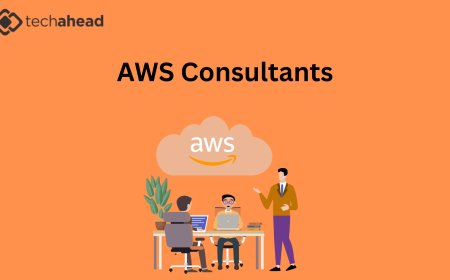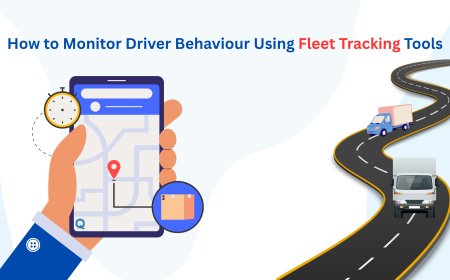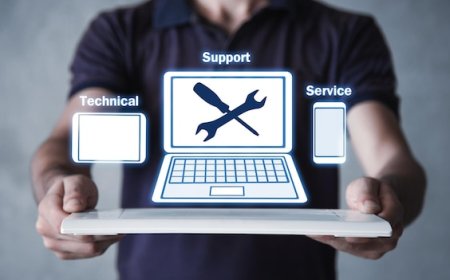Remote vs On-Site: Helpdesk Delivery Models Compared
Explore the pros, cons, and differences between remote and on-site help desk IT services to choose the best support model for your business.

In todays business environment, a smooth-running IT system is essential. Whether it's troubleshooting software issues, recovering lost data, or fixing faulty networks, businesses need prompt and reliable IT support. Two popular approaches have emerged to deliver this support remote help desk IT services and on-site IT support.
With the increasing reliance on technology, especially in hybrid and remote work setups, it's important to understand which delivery model suits your organisation best. In this blog, well explore both remote and on-site helpdesk models, their pros and cons, and how IT managed support services often combine the strengths of both to offer flexible and cost-effective solutions.
What Are Remote Help Desk IT Services?
Remote help desk services allow IT professionals to resolve issues without being physically present at your location. These services typically include support via email, phone, or live chat, and may also involve remote desktop tools that allow technicians to take control of your devices to diagnose and resolve problems.
This model is especially popular among small to medium-sized businesses (SMEs), startups, and companies with distributed teams. Its an ideal solution for day-to-day technical problems like password resets, software installation, email configuration, and more.
Remote support is commonly a part of broader IT managed support services, providinghelp desk IT servicesthat are scalable, responsive, and effectively available almost instantly.
What Are On-Site Helpdesk Services?
On-site helpdesk services involve IT support professionals visiting your office or premises to solve technical issues in person. This model is most effective for dealing with hardware repairs, server installations, or complex network configurations that require physical access.
On-site support is often used by larger organisations, companies with sensitive data or compliance requirements, or those that rely heavily on local infrastructure. While not as fast as remote support, it adds a personal touch and can be invaluable during system overhauls, office moves, or hardware failures.
Businesses that choose IT managed support services can typically schedule periodic on-site visits as part of their service package, blending both remote and physical support to meet all their needs.

Comparing Remote vs On-Site Help Desk Models
The table below provides a clear comparison of both support models across key factors:
|
Feature / Factor |
Remote Help Desk IT Services |
On-Site Help Desk Services |
|
Response Time |
Instant or within minutes |
May require scheduling |
|
Cost |
Lower no travel time |
Higher includes travel/labour |
|
Suitable For |
Software, network, basic issues |
Hardware, infrastructure tasks |
|
Scalability |
Highly scalable |
Limited by technician availability |
|
Availability |
24/7 possible |
Often limited to working hours |
|
Personal Interaction |
Limited to digital communication |
Face-to-face support |
|
Security & Compliance Handling |
Encrypted and remote tools used |
Direct handling of physical assets |
|
Part of IT Managed Services? |
Frequently included |
Often offered in blended packages |
This side-by-side view helps businesses understand where each model excels and how a combination might serve best.
Pros and Cons of Each Model
Every delivery model comes with its own advantages and limitations. Lets break them down:
Remote Help Desk Services
Pros:
- Quick Response:Problems can be addressed almost immediately, no need to wait for travel.
- Cost-Efficient:Saves time and travel costs, often included in fixed monthly packages.
- Flexible Access:Support can be provided after hours or during holidays.
Cons:
- Limited Physical Access:Cant fix hardware failures or cabling issues.
- Impersonal:Some users prefer face-to-face interaction with technicians.
On-Site Help Desk Services
Pros:
- Hands-On Support:Essential for physical tasks like replacing routers or workstations.
- More Personalised:Builds stronger relationships with IT teams, reassuring staff.
Cons:
- Slower Response Time:Travel and scheduling may delay issue resolution.
- Higher Cost:Includes labour, call-out charges, and potential disruption during visits.
Choosing the Right Model for Your Business
Choosing between remote and on-site help desk models depends on your specific business needs. Here are some key questions to ask:
- What type of IT issues are most common?
If your team mostly faces software bugs or email problems, remote support may be enough. But if you deal with frequent hardware issues, youll need on-site help. - How critical is downtime to your operations?
Businesses with 24/7 operations or high reliance on uptime may benefit more from immediate remote access. - What is your budget?
Remote support is generally more affordable and is often included in IT managed support services plans. - Where are your staff located?
If your workforce is spread out across regions or works from home, remote help desk services are more scalable and practical. - Are there any compliance concerns?
Some industries may require physical access for security checks, which makes on-site support necessary at times.
In many cases, a hybrid approach works best combining the speed and cost-effectiveness of remote support with the physical assurance of on-site visits when needed.

Example
Lets consider a real-world scenario:
A growing marketing agency in Manchester has 40 employees. Most of the team uses cloud-based apps and works remotely. However, their in-house creative studio requires regular maintenance for high-performance workstations and printers.
To manage their needs, they opt forIT managed support servicesthat offer remote help desk support for the wider team, along with scheduled on-site visits for hardware and network maintenance in the studio. This balance ensures that the business remains productive and fully supported at all times.
Why Blended Helpdesk Models Are the Future
Many IT managed support services providers are now offering blended helpdesk solutions. These combine the best of both worlds fast, efficient remote response backed up by expert on-site technicians when the situation calls for it. This flexible approach not only saves money but also keeps your business agile.
Instead of being locked into one method, businesses can adapt the service model based on changing demands whether thats office relocations, security upgrades, or scaling up.
Conclusion
Both remote and on-site helpdesk delivery models offer valuable solutions, depending on your business structure, size, and technical requirements. While remote help desk IT services are quick, scalable, and affordable, on-site support provides that extra layer of personal touch and physical capability when its needed most.
In the end, the most effective IT support strategy often lies in a well-structured hybrid model and this is where IT managed support services shine.
At Renaissance Computer Services Limited, we help businesses choose and implement the right support model that fits their operations. Whether youre looking for remote support, on-site visits, or a mix of both, were here to make IT simple, efficient, and stress-free.





















![Top 11 Real Estate Mobile App Developers in Riyadh, Saudi Arabia [2025 Edition]](https://www.philadelphialivenews.com/uploads/images/202506/image_430x256_68621a9e48997.jpg)






















